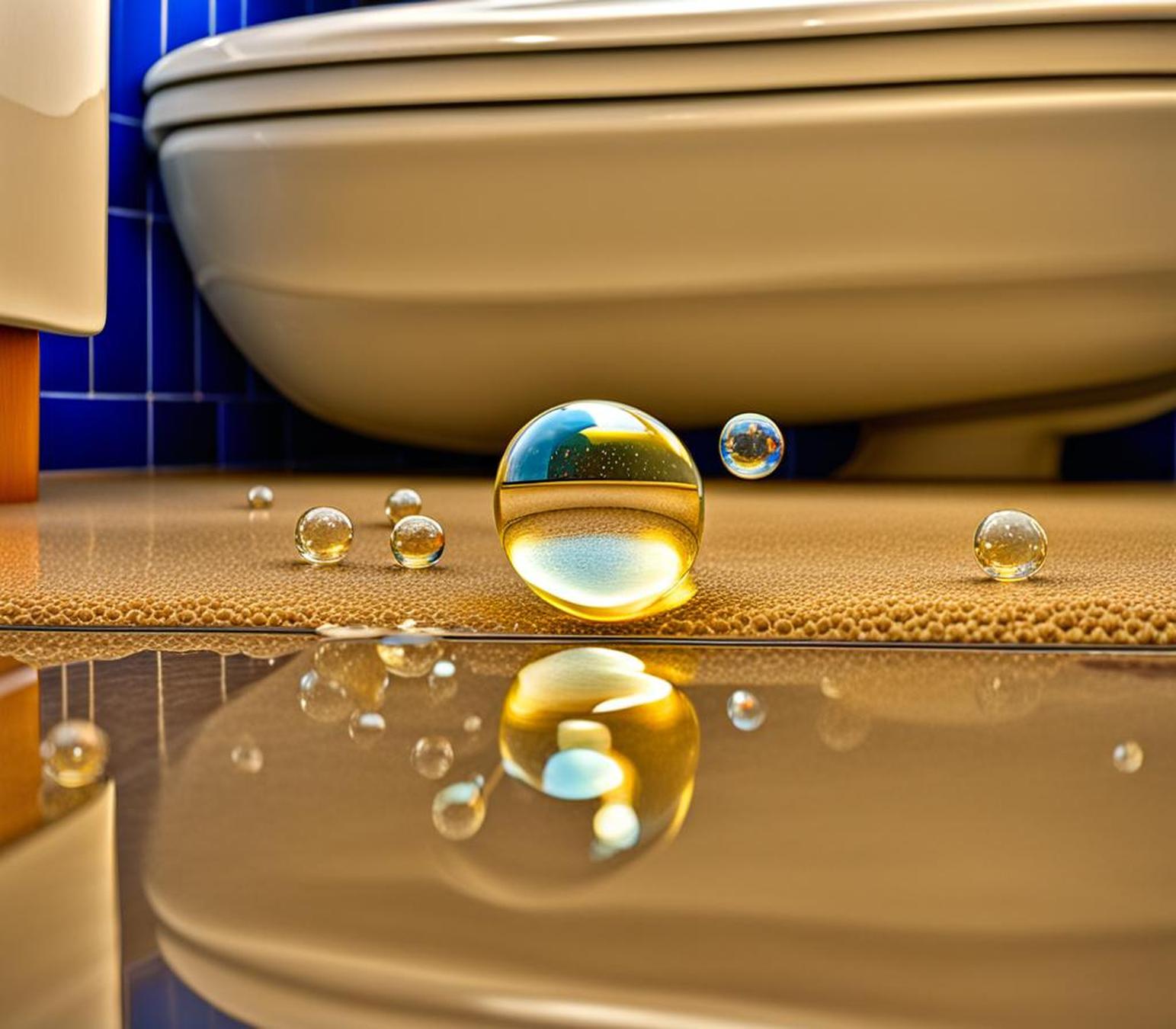If you’ve noticed your toilet starts bubbling or gurgling when you drain the bathroom sink, you’re not alone. This annoying phenomenon is caused by a plumbing issue that allows air to transfer between the fixtures. While it may seem harmless, a bubbling toilet can indicate clogged vents or pipes that require repair.
With some diligent troubleshooting and preventive maintenance, you can have a quiet, bubble-free toilet once again.
Common Causes of a Bubbling Toilet
There are a few primary causes that can lead to bubbles bursting up in your toilet when you use the sink:

Wet Venting
Many bathrooms utilize a plumbing vent configuration called wet venting. This means that the toilet, sink, and bathtub all share a common vent pipe due to their close proximity.
When there is a partial blockage in the drain or vent system, air gets trapped. As you drain the sink, that air has to escape somewhere – and bubbles up through the toilet bowl instead.
Partial Drain or Vent Blockage
Clogs from accumulated hair, soap scum, or other debris are a common cause of a bubbling toilet. These obstructions form in the drain or vent pipes connected to the fixtures.
When the pathway is narrowed by a clog, it forces air bubbles through the toilet when you drain the sink. Even minor blockages can create this effect.
Old or Corroded Drain Pipes
If your drain pipes are very old or made from galvanized steel or cast iron, years of corrosion can cause air pockets to form within the pipes.
As water goes down the sink drain, it ends up releasing those trapped air bubbles through the toilet instead, making it seem like the toilet itself is blocked.
Low Water Pressure
Houses with inadequate water pressure due to outdated plumbing can also exhibit a bubbling toilet when the sink is used.
Without sufficient water flow, air pockets accumulate in the pipes. The air then gets forced out through the toilet bowl when you drain the sink.
Water Heater Vacuum Effect
The way a water heater is configured in your plumbing system can actually create a vacuum effect in the drain lines.
This vacuum sucks in and accumulates air bubbles. They then get displaced through the toilet when you use the sink.
Troubleshooting Tips
Before calling a plumber, try these DIY troubleshooting steps to stop your toilet from bubbling:
Plunging the Shower Drain
Hair, soap residue, and grime often accumulate in the shower drain. Plunging and clearing this clog is an easy first step that may provide a quick fix.
Use a heavy-duty sink plunger to vigorously plunge the shower drain. This may dislodge any debris and allow air to flow freely again.
Snaking the Sink Drain
If plunging doesn’t work, the clog may be further down the pipes. Use a drain auger or flex “snake” to reach deeper into the sink drain to clear obstuctions.
Feed the snake down the drain in a twisting, pushing motion until you feel the blockage give way. Retrieve any debris pulled out by the snake.
Checking Toilet Base Level
An unlevel toilet that rocks or wobbles on the floor can also allow bubbles to come up through the bowl when you use the sink.
Check if the toilet base rests evenly on the floor. If not, use plastic shims to stabilize and level the toilet so it sits flush.
Installing a Vent Screen
Debris or animals can sometimes clog the plumbing vent stack on your roof, which restricts airflow.
Installing an inexpensive mesh vent screen over the vent pipe opening prevents future clogs from forming.
When to Call a Professional Plumber
While many bubbling toilet issues can be DIY fixes, there are times you may need a professional plumber to properly diagnose and repair the problem:
Persistent Bubbling Toilet
If plunging drains and installing a vent screen doesn’t eliminate the bubbling, the problem may be bigger than a routine clog.
A blocked vent stack on your roof requires professional drain cleaning. Rotating drain rods clear out debris inside the vent stack.
Full Drain or Sewer Line Clogs
Significant main drain or sewer line blockages that keep recurring can also lead to perpetual toilet bubbles.
A plumber can hydrojet the line clear or inspect if total replacement is needed in severe cases of root invasion or pipe deterioration.
Detecting Pipe Damage or Leaks
A professional plumber has the tools to check for underlying issues like pipe corrosion, damage, or small leaks that allow air to seep in.
They may recommend repiping portions of damaged drain lines or reconfiguring your venting setup.
Although annoying, a toilet that bubbles when you use the sink is usually an easy fix. In most cases, it simply indicates a partial drain blockage or vent restriction. With some diligent plunging, snaking, and preventive maintenance, you can stop the bubbling for good.
But if you’ve thoroughly tried the common DIY remedies with no success, don’t hesitate to call a professional. A plumber can diagnose any underlying issues to get your toilet functioning normally again.
